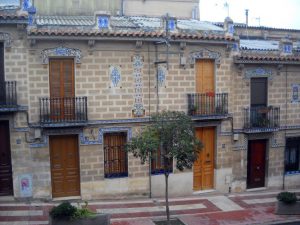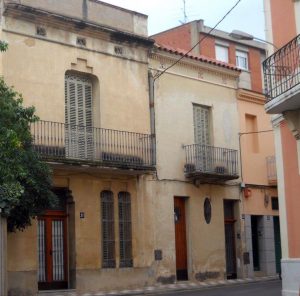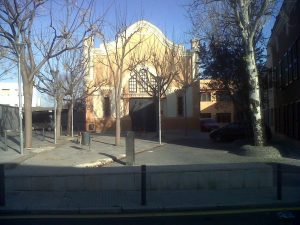
The modernist style in Martorell has a prominent name: Josep Ros i Ros (Martorell, 1885–1951). He could be considered the municipal architect of Baix Llobregat, as he was responsible for various works across the region, especially after the Civil War, rebuilding buildings mostly of a religious nature, such as the churches of El Papiol and Sant Feliu, which became a cathedral in 2004.
The architecture of Josep Ros i Ros, despite the eclecticism of some early works, mainly ranges between modernism and noucentisme. He broke with the traditional 19th-century architecture and, under the influence of Manuel Raspall, introduced new aesthetic trends in the Montserrat region, albeit somewhat late, evolving towards the adoption of the classical lines of noucentisme.
In Martorell, his work showcases the wide range of his production: funerary sculpture in the municipal cemetery, such as the Bové family tomb; warehouses; the Parellada houses; and the café and theater of El Progrés. He also collaborated in the construction of the parish church of Santa Maria de Martorell, together with Francesc Folguera, who had been an assistant to Gaudí at the Sagrada Família.
The most emblematic work of Josep Ros i Ros in Martorell is the Casa Torre Ros, located at the foot of the Serra de les Torretes, from where the path to Castell de Rosanes begins. However, his best-known creation is not in Martorell but in Sant Sadurní d’Anoia, with the famous Caves Freixenet.
This set of buildings and projects forms the basis of a Modernist itinerary that allows visitors to discover the architectural and heritage richness of Martorell, as well as the influence of Modernism and Noucentisme in the region.




